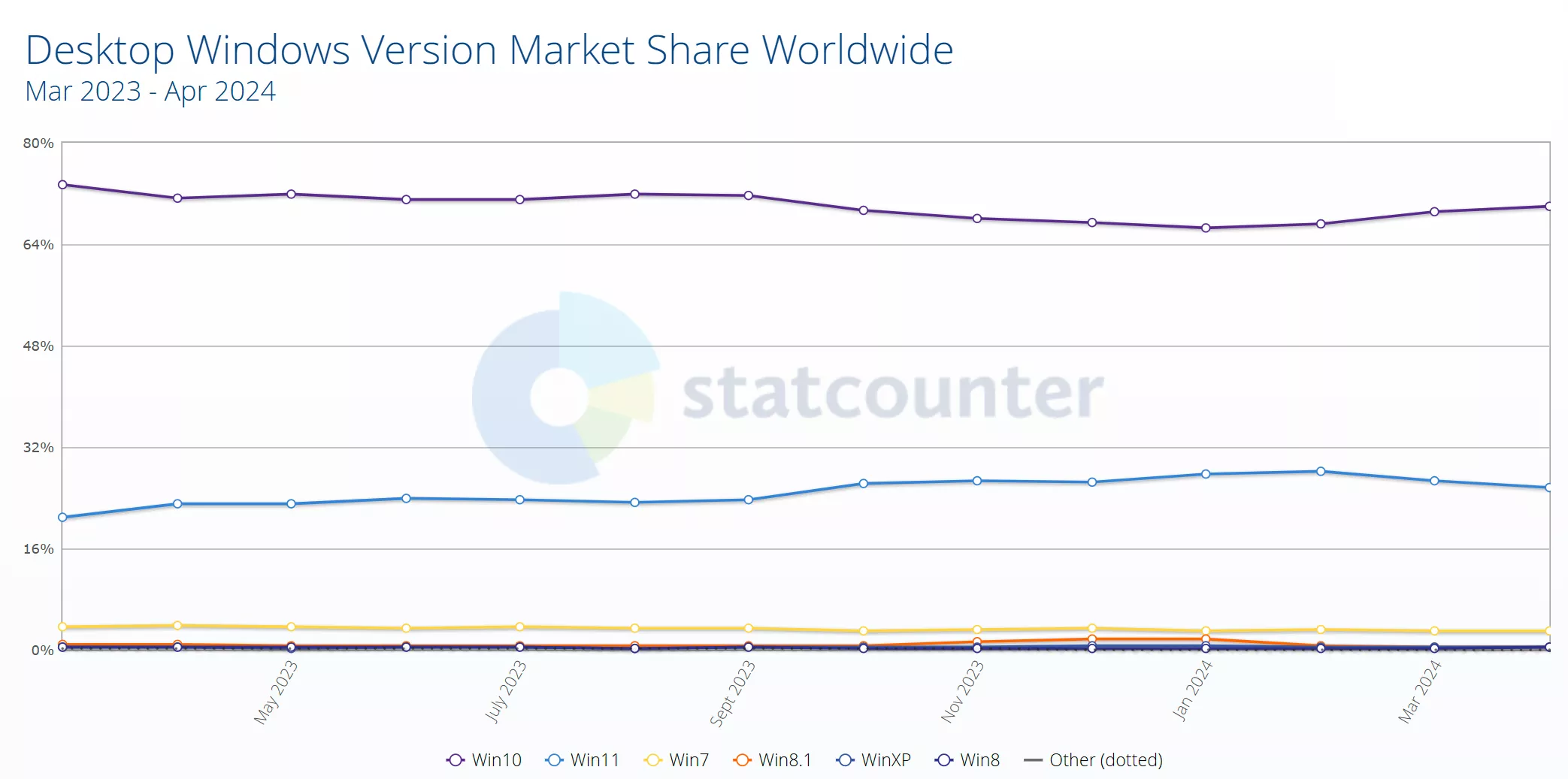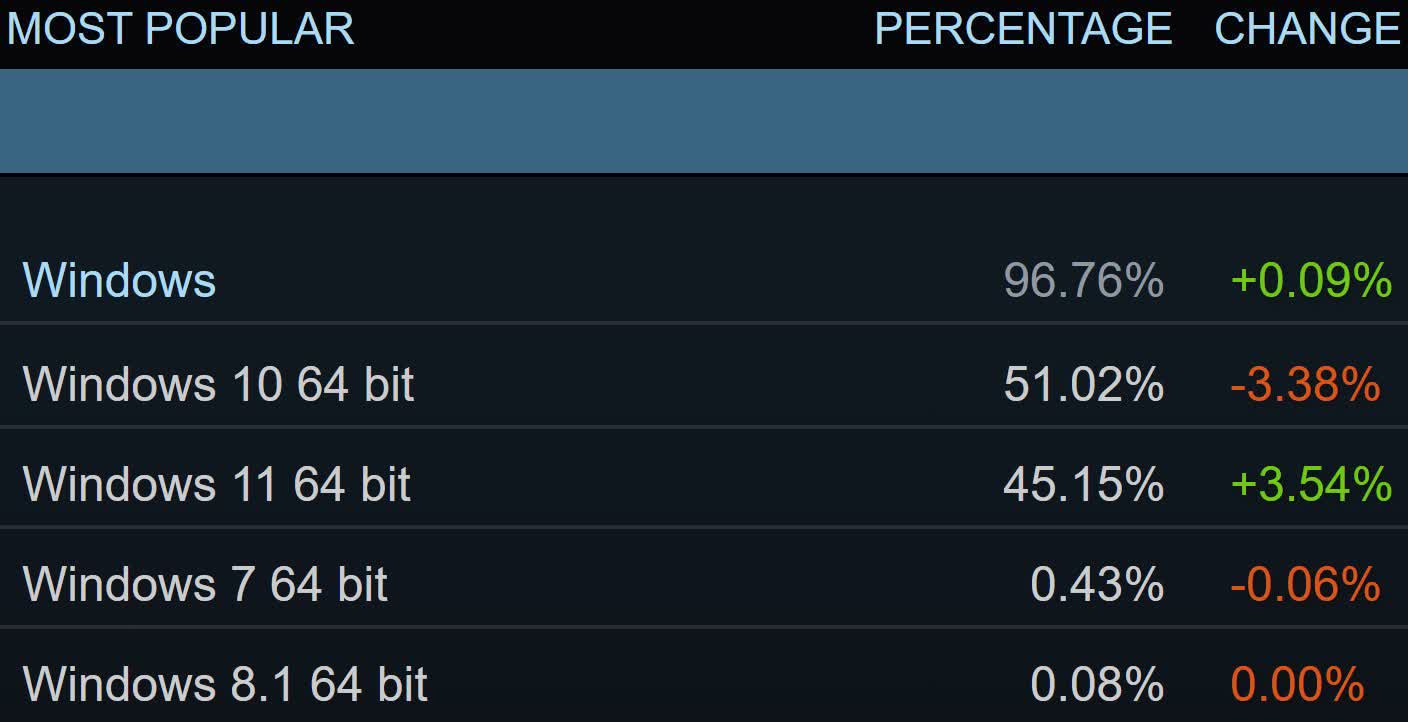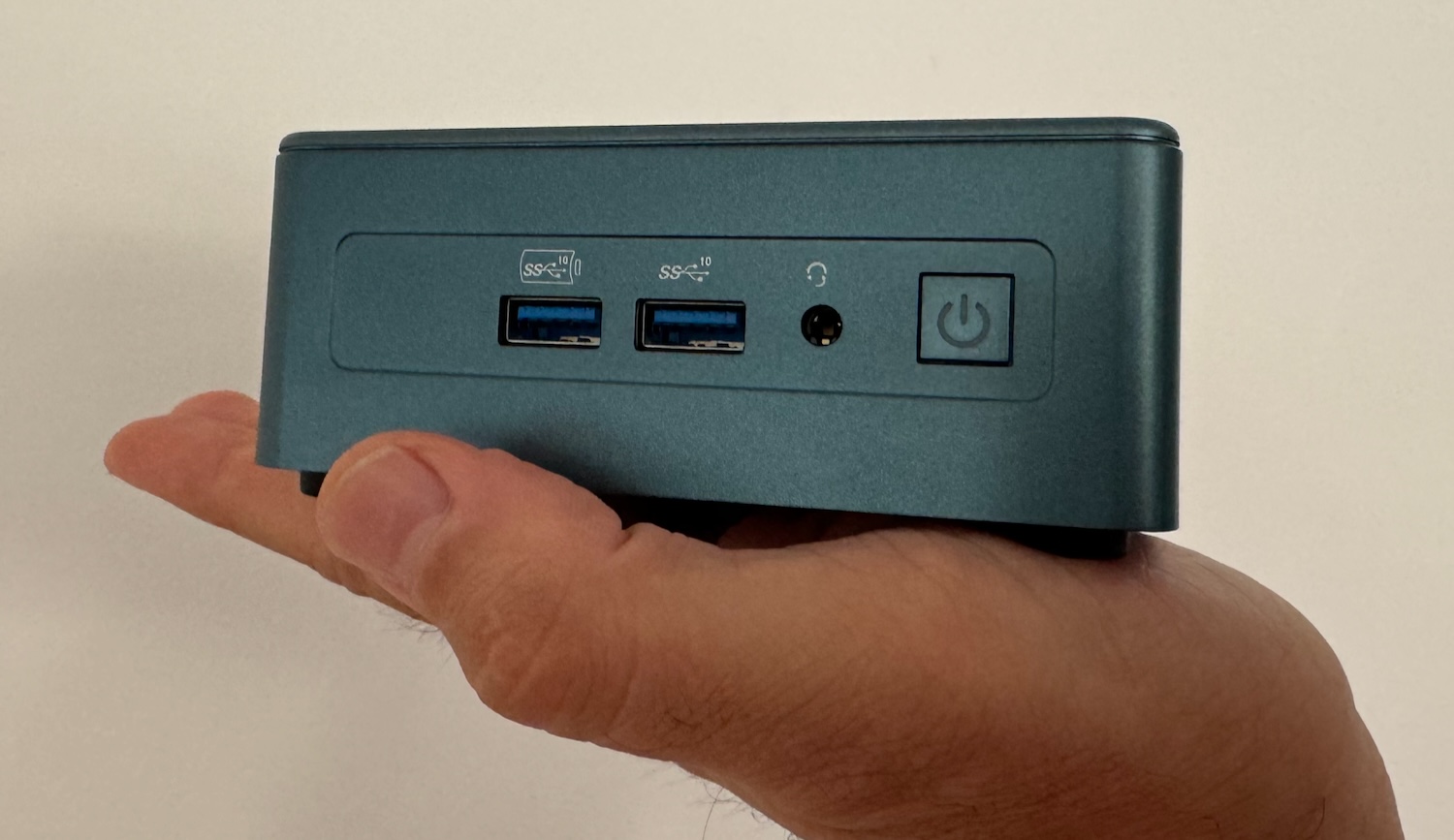The big picture: According to Statcounter’s data, the penetration of Windows 11 among Windows systems worldwide has yet to crack 30 percent after two and a half years of general availability. The outlook for the OS in the Steam survey is somewhat better, having made its first significant jump in months.
Windows 11 has entered its second month of market share decline on Statcounter’s global chart. The OS sank to around 25 percent adoption among Windows users while Windows 10 climbed back up to 70 percent.
Microsoft’s newest OS exhibited slow but steady growth from its October 2021 launch until it peaked at 28.16 percent in February. Since then, it has slipped by around two and a half percent.

Click to enlarge
Controversial CPU requirements might be one reason behind Windows 11’s sluggish performance, and the OS’s next major update, coming later this year, could worsen the situation. Version 24H2 will require processors with POPCNT and SSE4.2 instructions, blocking many older CPUs.
Reports suggest that 24H2 will introduce numerous AI features, including a more advanced implementation of Microsoft’s Copilot AI assistant that might employ NPUs to run tasks with reduced reliance on cloud servers. The company confirmed that 24H2 will add Wi-Fi 7 support.
Another issue that might degrade user satisfaction with Windows 11 is Microsoft’s introduction of Start menu ads. A currently available optional update adds a section to the menu containing recommendations of apps from a selection of curated developers on the Microsoft Store.

However, the April 2024 Steam survey shows that Windows 11 is gaining traction on gaming PCs, where it could soon become the most popular OS. It held at 41 percent in February and March but jumped to 45 percent in April, with Windows 10 falling to 51 percent.
Although Windows 11 hasn’t suffered any serious issues over the last few weeks, its predecessor hardly feels outdated, which is likely why it remains dominant. All games and most other programs still support it, but a relative handful of features (sometimes related to HDR or AI) might require Windows 11.
Microsoft ceased Windows 10 feature updates last year but will continue mainstream support for the OS until next fall. Version 21H2 of the Enterprise and Education Edition hits end-of-life status on June 11, 2024, and support for 22H2 ends on October 14, 2025. Receiving official updates afterward will require a subscription to the Long-Term Servicing Channel.











